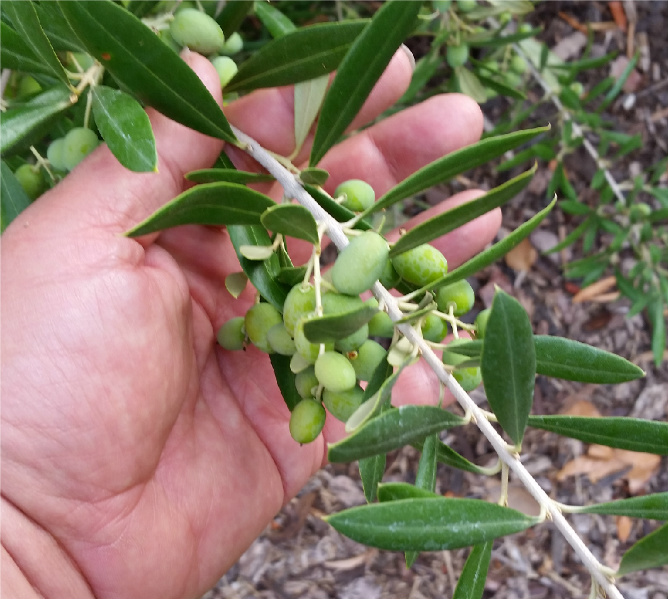good afternoon patty if my language is Spanish, but we will speak better English as the official language of the forum is English.
concerning its olive say that if you have 6 varieties of olives you will not have problems with pollination because the pollen olive weighs very little and can move many kilometers away.
concerning the water it needs an olive tree, saying that an olive tree can live perfectly without water, it is only necessary to water the first summer planting, that if to have a would need acceptable harvest about 600 or 800 liters of water per year, if a year only rains 400 liters would be good that we regasemos our tree providing 200 liters remaining (in September, for example is a good time to water and fruit fattening).
concerning the preparation of table olives with a pickle, there are 2 methods to remove the bitter olive:
1, the first method is using lye as you say, in particular caustic soda is used, this method is the most commercial and are using chemicals and also have olives worst taste, so for now I will not explain (unless you want to know what).
2nd second method is the most used at an individual level and olives taste better.
A-we must first know when pick our olives from the tree, I recommend not pick all the olives the same day, best cojerlas 3 times so our olives will be much better and we can eat them during more months, we can grab the olives in these 3 phenological stages:
- Green olives, these olives can grab from mid-September to mid-October, as you know when you can grab? Easy, just take an olive and mash with a stone, if the meat is separated from the bone and its olives are ready to be collected, if the meat is not separated from bone wait a little more and repeat the process.
-in veraison, when the olives are changing color, this time we have in the tree green olives, half black olives and half green and black olives…in this state is like me personally but I like, for example, we can grab 25% green, 50% green-black and 25% black in this state are more or less from October 15 to November 15.
-the other option is to pick them totally black from November 15 to November 30, we must not exceed much those dates or olives longer have oil and they will be very soft and would not last long in brine.
In short, if we recojerlas at one time we can do it in any of the states described (I advise the second) and if we can pick them up gradually since the ideal is to catch them in 3 ways, so we can eat more fresh.
B-once we have collected our olives we introduce them in a bucket with water and then have to mash with a wooden mallet and deposited in another bucket with water, this is done to break and you can remove the bitterness inside, deck must be wood, never use a hammer or a sledgehammer or excessively break the olives, so used wood that absorbs a little (deck can manufacture it ourselves or we can buy a wooden mallet carpenter)
if you are skilled with wood can be manufactured this appliance has dual use, this device is placed over the bucket with water and can pass the olives for their holes inside the holes there are blades that cut the olives and the other end temos a deck that we activate it as a hinge to crush the olives (the same system crack a nut against a door hinge)
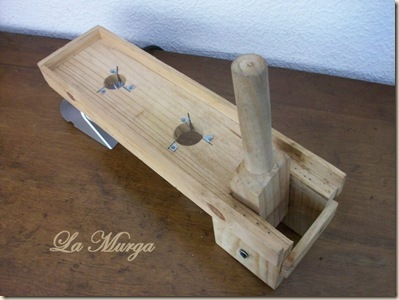
C-However, once we have crushed our olives and have them in a bucket with water tap remove the bitterness, this is easy, you have to remove the water every 24 hours and add new water, my mother (84 years) accelerates the process changing water 2 times a day instead of once, so if we want to be ready before we remove the water and add fresh water every 12 hours (the water we remove this bitter and so you have to change the water every our olives days or lists shall not).
how many days you have to repeat the process? it depends on how they were ripe olives, usually with 8 days should be enough (my mother change the water 2 times a day and 4 or 5 days are ok to eat) … … to see if our olives are ready to eat we catch one and we eat it, if this sweet and if it already has even bitter and woody flavor we leave them in water a few days more
D-once our olives are sweet and salt lack throw them to not put soft, in my country there is a fine salt and coarse salt, if there is equal use coarse salt … . how much salt to add? it depends on the quantity of olives there, can not say exactly echo handfuls hand and ready, but their containers will have a different volume so that you, as a reference means that there are people who hits a raw egg must calculate and cascara in the water and add salt until the egg rubbed into the water, then it has the right salt.
E-dressing well when we add salt, we must also add spices that will give you a good taste of our olives, here is very difficult to agree, everyone has their tastes.
me, I do not particularly like to add many spices olives or will disappear much the flavor of the olive, I with salt add a little thyme, a little fennel few bay leaves and a few cloves of garlic and It is done.
You can add more spices or can test which we like more, for example, can add a little vinegar, a lemon peel, orange peel, orange or lemon slices.
I recommend the first year they put the olives in several boats and add different spices and decide which you like more.
this would be the final result: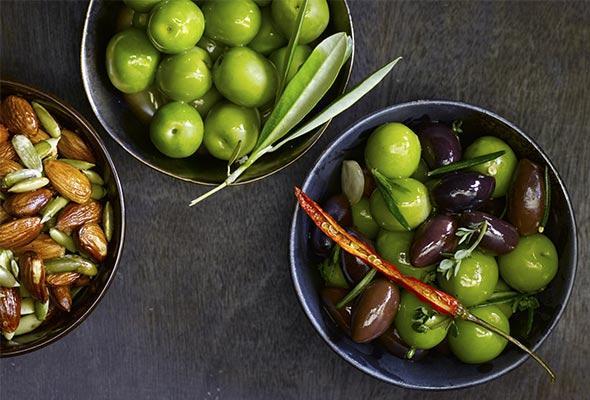
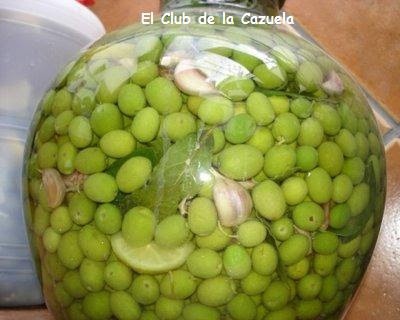




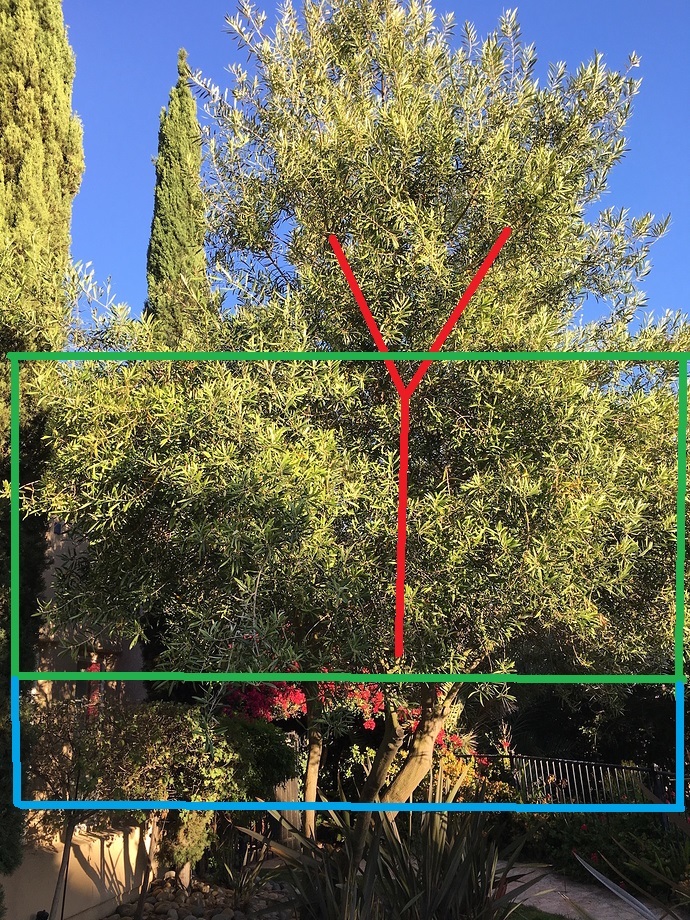
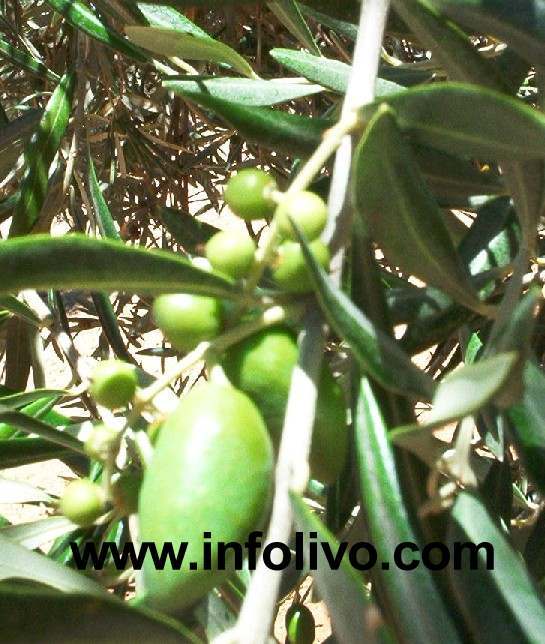


 If I increase my water to my trees, I’ll get plenty of fruit set, I’m not too worried about that. I actually never really considered promoting fruit set with my olives. They’re here in my yard mainly for their very lovely ornamental characteristics. Here in S. California, you’ll olive trees everywhere, they are very, very popular landscape trees because they require almost zero care and look gorgeous. When I’m back down on Sycamore Street as a passenger, I’ll try to snap a picture of the beautiful olive trees (I know, the street is named, “Sycamore”, and there are no Sycamore trees growing on the street anywhere), that grow in the boulevard, they are so beautiful. Typical of our area here in San Diego county - lots of commercial landscaping with olive trees. I have at the least, 6 different olive cultivars on my property, so plenty of options for cross pollination, and if this is Picual, and it’s self-fertile, then really there should be no need for a cross-pollinator. I’m going to try to harvest the olives from at least this tree this year, and brine them or cure them. I got motivated to do that after hearing several of our list members who have done so, and going to give it a whirl this year. Just need to know whether to use brine or lye for these olives, and looking for very detailed instructions. I downloaded a leaflet from UC ANR Publication
If I increase my water to my trees, I’ll get plenty of fruit set, I’m not too worried about that. I actually never really considered promoting fruit set with my olives. They’re here in my yard mainly for their very lovely ornamental characteristics. Here in S. California, you’ll olive trees everywhere, they are very, very popular landscape trees because they require almost zero care and look gorgeous. When I’m back down on Sycamore Street as a passenger, I’ll try to snap a picture of the beautiful olive trees (I know, the street is named, “Sycamore”, and there are no Sycamore trees growing on the street anywhere), that grow in the boulevard, they are so beautiful. Typical of our area here in San Diego county - lots of commercial landscaping with olive trees. I have at the least, 6 different olive cultivars on my property, so plenty of options for cross pollination, and if this is Picual, and it’s self-fertile, then really there should be no need for a cross-pollinator. I’m going to try to harvest the olives from at least this tree this year, and brine them or cure them. I got motivated to do that after hearing several of our list members who have done so, and going to give it a whirl this year. Just need to know whether to use brine or lye for these olives, and looking for very detailed instructions. I downloaded a leaflet from UC ANR Publication 